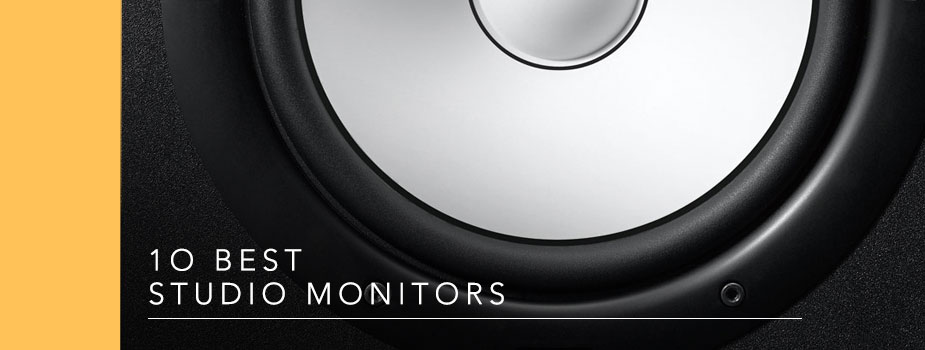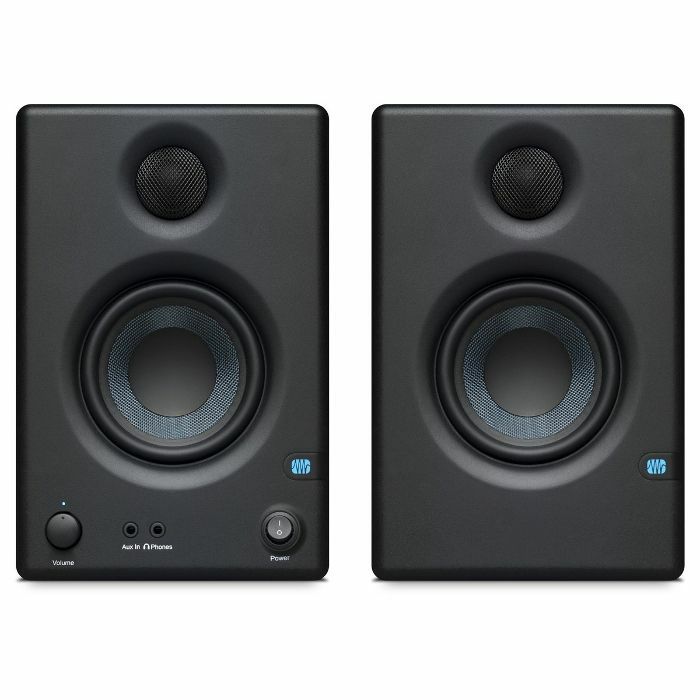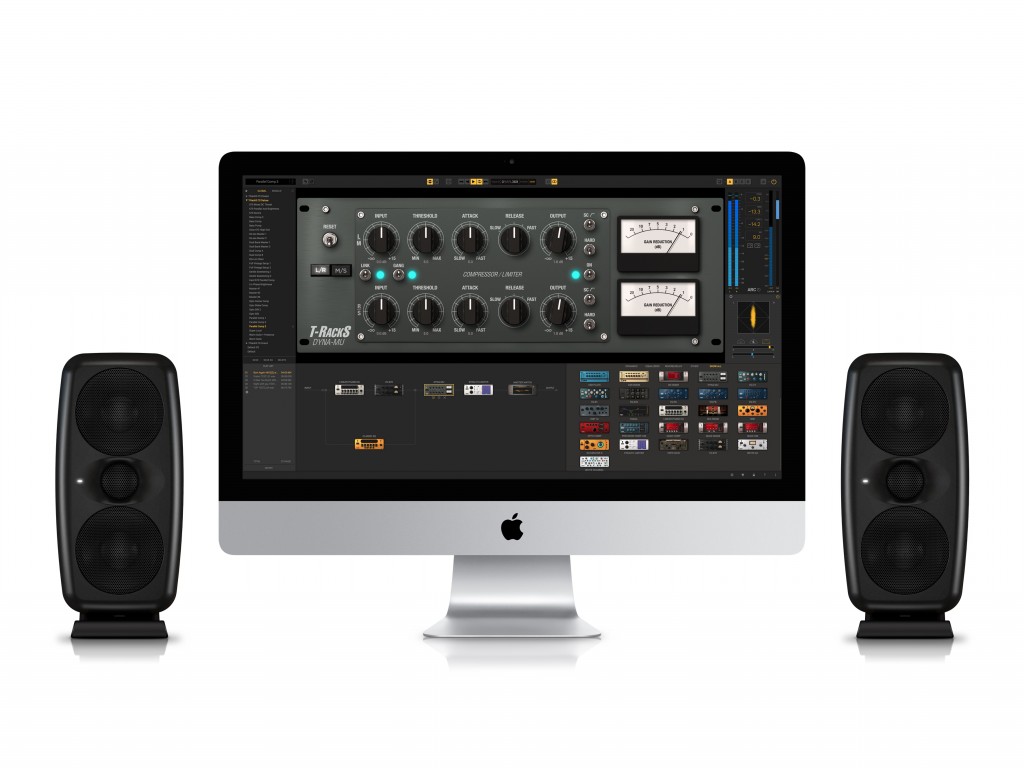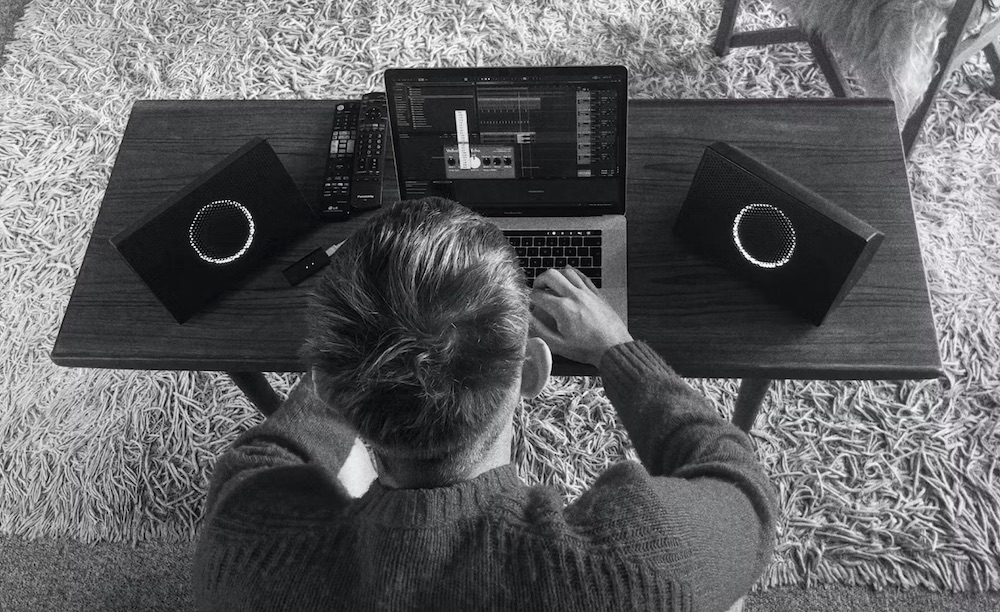Best Studio Monitors 2024
Newly updated for 2022, we round up the best studio monitors on the market, including options from Genelec, Yamaha and IK Multimedia.

For anyone even remotely serious about music production, a decent pair of studio monitors is a must-have. Studio monitors are specialist loudspeakers, designed explicitly for production. They should exhibit flat frequency response, but even more importantly good monitors shouldn’t flatter your music; on the contrary, they should expose every last detail and allow you to focus in and analyse every element of the music.
These days, the vast majority of studio monitors (and all of the models on our list) are active designs, with amplifiers built into the speakers themselves. All that’s required is to connect to a line output from your mixer or audio interface. All of our choices are ‘nearfield’ monitors suitable for use in smaller rooms, where the listening position might be as low as one metre from the speakers.
Contents
What to look for
Common features
The first thing to know when looking for studio monitors is that there’s a lot of jargon. ‘Studio monitor’ itself is really nothing more than a fancy name for reference-quality speakers designed for studio use. You’ll also commonly hear the term ‘nearfield’ used to refer to monitors that sit close to the mix position.
Most of the monitors on our list are conventional ‘two-way’ designs, meaning that they have two drivers (the individual speaker cones), usually referred to as the tweeter (for high frequencies) and woofer or bass driver (for low frequencies and midrange).
Two-way monitors remain the most common design across all price points, usually offering the best compromise. Three-way designs (with separate bass and midrange drivers) might logically seem to offer more precision, but they’re not as common for a couple of reasons. The first is largely due to the fact that designing a three-way monitor is considerably more complex than a two-way design, and therefore more difficult to get right. The second is that it inherently requires more components, meaning the cost is higher.
There are lots of even more esoteric terms thrown around, from flax sandwich cones to titanium-fabric tweeters via logarithmic waveguides. Don’t get too hung up on any of it; they’re essentially all different ways of achieving the same thing, which is clear and detailed sound that lets you hear exactly what you’re doing as you produce, mix and design sounds.
The vast majority of studio monitors are now ‘powered’, meaning that each speaker has a built-in amplifier, or ‘active’, meaning that they have a dedicated amplifier circuit for each driver. There are a very small number of ‘passive’ monitors still on the market, which require a separate amplifier, but these are now vanishingly rare.
Bigger isn’t always better
One of the common misconceptions with studio monitors is that size is everything. Most producers have seen photos of gigantic speakers in pro studios and quite reasonably assume that this is something to aspire to.
There is an element of truth in there, which is that bigger speakers can generally produce lower bass frequencies than smaller models, but that’s only part of the story. For smaller studios – and especially home setups – smaller speakers often sound better than bigger ones, which can easily overwhelm the physical space. For most small studios, a good rule of thumb will be to choose a two-way design with bass drivers somewhere around 6 inches in diameter. Genelec’s 8020Ds, for example, are a masterclass in getting clear, precise sound from a smaller design, with a dimunitive 4-inch woofer.
The best studio monitors

A relative newcomer to the studio monitor market, PreSonus’s debut came in 2013 with the release of the Eris E5 and E8 models, both of which immediately gained a reputation for offering exceptional value for money. Both have now been upgraded to improved XT models, but the range has also expanded downwards in the form of the Eris E3.5.
As the name suggests, the Eris 3.5 is a two-way design with a 3.5-inch woofer, which might seem too small to offer sufficient low end – especially for bass-heavy dance music – but the Eris does a respectable job, offering a frequency response that extends down to 80 Hz before rolling off. While it’s impossible for a driver of this size to match the punch and depth of a larger cone, the Eris 3.5 provides just about enough bass clarity to give an overall impression of your low-end mix.
There was a time not so long ago when studio monitors at these very low price points would be bordering on unusable, but the Eris range proves that it’s now more than possible to buy clear and surprisingly accurate entry-level monitors. They’re definitely not the last word in sonic accuracy, of course, but for a tiny, affordable option they’re more than capable.
More info/Buy
IK Multimedia have only been involved in the studio monitor business for a few years, but the company’s first few offerings have already made a significant impact. The Italian company’s product range is best described as eclectic, ranging from iPhone recording interfaces to analogue synths via microphones and MIDI controllers. If that jack-of-all-trades approach suggests that their monitors might be generic or half-hearted attempts, that couldn’t be further from the truth.
The iLoud Micros are a successor to the original iLoud, which was more of a portable Bluetooth speaker than a proper monitor. The Micros are tiny little things, around 18 x 13 cm when viewed from the front and weighing just 850 grams each. With a 3-inch bass driver, you’d be forgiven for assuming that their bass response would be lacking, but that’s not the case, with the bottom end extending down to an impressive 55 Hz. It doesn’t seem possible that a box this small should be able to produce such deep sound, but the Micros don’t sacrifice accuracy or stereo imaging for the sake of bass. They punch above their weight, making them a strong contender if you’re pushed for space.
We’d also strongly recommend considering the more expensive iLoud MTMs, which are a similar design but offer built-in acoustic room correction using a bundled measurement microphone. This shouldn’t necessarily be taken as a substitute for proper acoustic treatment, but it does help to compensate for uneven acoustics in awkward spaces.
More info/Buy| Tech specs | |
|---|---|
| Woofer | 3″ paper cone |
| Tweeter | 3/4″ silk dome and neodymium magnet |
| Frequency response | 45 Hz – 20 kHz |
| Dimensions | 180 x 90 x 135 mm |
| Weight | 920 g |

The much bigger brother to the iLoud Micro, the MTM version follows a similar approach, but offers much more serious sound. Bigger, bassier and more precise, the MTMs deliver reference-level sound quality thanks to dual 3.5-inch woofers and back-chamber loaded 1-inch tweeter. Like the iLoud Micros, the MTMs are also designed to work well in awkward acoustic environments, although whereas the Micros focus around EQ via built-in DSP circuitry, the MTMs go to the next level: analyse your studio space using the included measurement microphone and the MTMs will automatically adjust their DSP settings to deliver phase-coherent response. In other words, they create a custom calibration for the best possible sound at your listening position.
IK claim that the MTM (mid-tweeter-mid) design offers a more defined point source sound at close distances than can be achieved by traditional two-way designs. The net result is a more natural sound and less fatigue when mixing for long periods. The benefits of the iLoud MTM are probably biggest in smaller, less well treated studio spaces, but the MTMs will definitely appeal to anyone looking for versatile, precise monitoring in a compact package.
More info/Buy| Tech specs | |
|---|---|
| Woofer | dual 3.5″ |
| Tweeter | 1″ high definition, back-chamber loaded |
| Frequency response | 50 Hz – 24 kHz (± 2 dB) |
| Dimensions | 264 x 160 x 130 mm |
| Weight | 2.5 kg |

The iconic white cones of Yamaha’s 1970s NS-10Ms quickly came to symbolise the very concept of a recording studio, so Yamaha can certainly be forgiven for resurrecting the appearance of the vintage models for their current monitor range. That being said, any similarities are purely cosmetic, with no particular connection in terms of technology or sound. There are some who would say that’s a shame (for whom the Avantones are probably the best choice), but to most people the more contemporary approach of the HS8 and the other models in the current Yamaha range will be more appealing.
The HS series are active two-way monitors with a relatively flat frequency response and an engaging, energetic sound. This HS8 model, equipped with an 8-inch bass driver, is the largest of three, with the HS5 (5-inch) and HS7 (6.5-inch) sitting below it in the range. There’s absolutely nothing unusual about the specification or design of the HS monitors, with a very conventional bass-reflex enclosure (i.e. a box with a port), dome tweeter and two-way bi-amped design. The result is a monitor with a clear top end, revealing mid range and precise bass response extending down to 47 Hz. The HS8 is a great all-rounder.
More info/Buy| Tech specs | |
|---|---|
| Woofer | 8″ cone |
| Tweeter | 1″ dome |
| Frequency response | 38 Hz – 30 kHz |
| Dimensions | 250 x 390 x 334 mm |
| Weight | 10.2 kg |

Finnish brand Genelec built their reputation on premium options for high-end studios, with their monitors become mainstays of pro recording facilities around the world. In recent years, the company has also expanded its range into more affordable territory, offering an increased number of smaller options for home studios, mobile use and desktop monitoring in programming rooms, video edit suites and similar locations where a full-size monitoring setup might not be necessary or practical.
The 8020D is a relatively humble model in the grand scheme of the brand’s product range – their top-end nearfield models reach well into the thousands of pounds – but it’s a good representation of what Genelec do well. As you’d expect at this price point, there’s a noticeable step up in clarity and accuracy through the midrange compared to a cheaper speaker like the Yamaha HS8. One of the trade-offs is the measured bass response, which rolls off from around 60 Hz, but it’s crucial to note that bass presentation is clear and accurate. It’s an important reminder to judge monitors by their sound and not how their specifications compare on paper. As a compact but professional-sounding monitor, the 8020 is a superb choice.
More info/Buy| Tech specs | |
|---|---|
| Woofer | 4″ Metal Dome |
| Tweeter | 3/4″ Metal Dome |
| Frequency response | 56 Hz – 25 kHz |
| Dimensions | 242 x 151 x 142 mm |
| Weight | 3.2 kg |

AIAIAI’s debut studio monitors are unlike anything else on this list. In typical innovative style, the Danish brand’s Unit-4s follow a unique formula. They’re surprisingly neutral and balanced for compact monitors, with their four-inch woofer and one-inch silk-dome tweeter delivering ±2 dB frequency response from 50 Hz to 20 kHz and extension down to 40 Hz. App-controllable sound profiles also allow you to tune the monitors appropriately, for a range of indoor and open-space settings.
On the subject of those open spaces, the Unit-4s also feature built-in rechargeable batteries, meaning you can use them wherever you want regardless of power availability. If that’s not enough, they’re actually fully wireless thanks to the same Wireless+ transmitter we’ve seen on the brand’s TMA-2 headphones. The Wireless+ protocol offers higher quality and lower latency than you’d get from typical wireless Bluetooth connections, meaning that producing and mixing is possible with a fully wireless setup.
The Unit-4s won’t be for everyone, but they hit a unique niche. They’re certainly the most portable monitors we’ve ever seen, and ideal for anyone who wants to collab with friends in different settings or have the option of making and mixing music while travelling. As a bonus, eco credentials are good thanks to 100% recycled plastic construction, and a certain degree of modularity with a glue-free design allowing you to dismantle the entire speaker with just two screwdrivers and a cheeky hint that in future you’ll be able to “upgrade and replace components such as batteries, driver units and wireless electronics”. If this represents the future of AIAIAI’s unique approach, we say bring it on.
More info/Buy| Tech specs | |
|---|---|
| Woofer | 4” high excursion |
| Mid-range/tweeter | 1″ silk dome |
| Frequency response | 50 Hz – 20 kHz (±2 dB) |
| Dimensions | 180 x 90 x 135 mm |
| Weight | 2.5 kg |
In summary
As with all of our 10 Best guides, there are solid choices here to suit every budget. The humble Presonus Eris E3.5s offer huge value for money as an entry-level option, whereas more expensive models from brands like AIAIAI and Genelec offer true professional sound.
From the options we’ve chosen here, there’s a clear progression from entry-level models to mid-range options and the more serious monitors at the higher end of our price range. As you progress up the scale, the biggest difference you’ll notice is improved precision and accuracy in reproducing sound, which translates to more detail and (hopefully) better mixes. You’ll also often notice increased bass response, extending down to lower frequencies, but remember that how low a speaker can go is less important than how accurate it is.